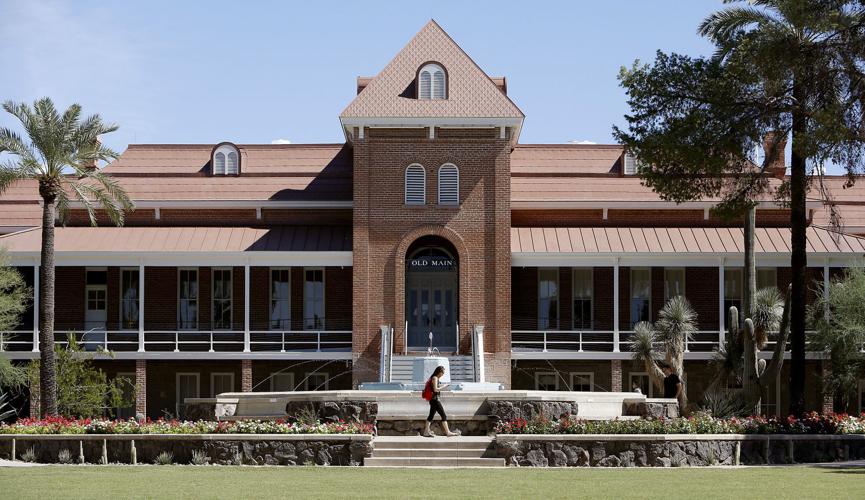For decades, it’s looked like corporate America is rigged: Executive pay has soared while the wages of average employees have languished, if they kept their jobs at all.
More and more, the same idea applies to universities like our own UA.
As years passed and we’ve spent less tax money on public universities, that’s led our boards to tell the universities to act like corporations. The term they use at the Arizona Board of Regents is “enterprise.” So the presidents became like CEOs out looking for new business activities that can produce additional revenue streams to replace the tax money.
You saw one stark result last week: UA President Ann Weaver Hart got a $25,000 raise to $500,000— a 5.2 percent increase. She also got $115,000 in merit pay for meeting performance measures. And she got a $20,000 boost in her housing allowance, to $70,000 per year.
Her total compensation, including pension, will top $780,000 this year. Not bad if you can pull it off! But not really welcome news to the 12,000 or so employees who have barely had raises since the 2007-2008 school year and who foresee this unwelcome pattern playing out into the future.
Nor was it welcome to the 44 employees whose layoffs were announced the day before her raise was passed. Those layoffs were among 320 cuts of positions at the university, most of which were empty and now won’t be filled.
“Most people are not happy that this is the way things are, that the whole system works the way it does,” UA faculty chair Lynn Nadel told me Tuesday. “We have a system right now in higher education that has moved toward a corporate approach in which the CEO is paid the kind of compensation that CEOs get paid on the assumption that these people are leading multibillion-dollar enterprises.”
They are, in a way: The universities are each billion-dollar organizations. But when they were largely funded publicly, they used to recognize they were serving a public purpose. As that’s changed, so has the treatment of employees.
Since 2007, the maintenance workers, office staff, counselors, police officers and faculty have had to suck up real losses in pay — if you consider the steady inflation that has taken place while their wages were flat.
Under Hart, the university offered 3 percent pay raises in the 2013-2014 school year, the first ones in seven years. Those were distributed on a merit basis, so some people got more, some got less. The same thing happened last year with a 1.5 percent pay increase.
Under Hart, UA employees have gained back a little bit of their losses, but the prospects at a workplace like the UA just aren’t what they used to be.
Provost Andrew Comrie told me Tuesday about the heady old days when all UA workers would receive across-the-board salary increases from time to time. An online listing of UA salary increases shows there was a 5 percent cost-of-living pay increase in 1994-1995 and a 4.9 percent increase in 2005-2006, with a handful of similar raises in between.
Those days are over.
“In the old days, the state would give us money to give raises. They don’t do that any more,” Comrie said. “What you really want to do is have some sort of scaled merit increases so that the better performers get more.”
That’s what the university has done over the last couple of years: Small, variable raises. At the same time, some individual professors may get a pay raise to keep them from leaving for another university. Future raises? Who knows. It’s all dependent on the business of the university.
Land-grant universities like the UA were accepted as taxpayer-funded public entities up until the 1970s, David Schultz of Hamline University in St. Paul, Minnesota, told me Tuesday. He’s been researching the evolution of public universities for about a decade.
As legislatures cut funding, year over year, universities were forced to innovate. That sounds like a good thing — but it required selling students on the idea of taking huge loans for high-priced MBA programs and other moneymakers that could underwrite traditional university activities, like teaching undergrads liberal arts.
Then the Great Recession came and made the massive student-debt loads unsustainable.
“The model that persisted up till 2008-2009 has crashed,” Schultz said. “Schools are trying to find a new business model.”
It’s no coincidence that you’ve heard increasing talk of “technology transfer” and new businesses emerging from university research. The universities are looking for whatever ways they can find to make money, including licensing or patenting faculty members’ innovations.
What feels lost in this evolution is the fundamental role of the university: Teaching Arizona’s young adults topics that may or may not improve their earning potential but that definitely help them grow as adults and citizens. Regents Chair Jay Heiler assured me that hasn’t been lost, just obscured.
“It’s still a central role for many, many students, even thought the more predominant public conversation is around job preparation, and the university as the source of the professional credential,” he said.
So I don’t blame Ann Weaver Hart for taking the money, even in a week when the university also announced job cuts. It fits with her self-image as an unapologetic, tough executive.
But I do blame a political system that demands public universities act like something they fundamentally are not: businesses.





